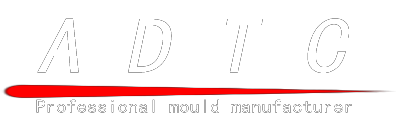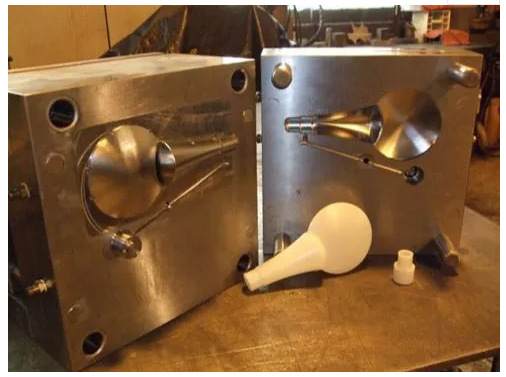Exhaust of injection molds is a problem that cannot be ignored in mold design. Poor exhaust gas can cause numerous problems, such as: porosity, voids, charring, air bubbles, surface silver streaks, and obvious weld lines.
There are several sources of gas accumulated in the mold:
1. The air stored in the feed system and cavity.
2. The water vapor generated by the evaporation of water contained in plastic at high temperatures.
3. Gas produced by decomposition of plastics.
4. Some additives in plastic volatilize or chemically reflect the generated gas
5. Inclusion of air and moisture in the feed!
The basic design points can be summarized as follows:
1. The exhaust should be ensured quickly and completely, and the exhaust speed should be compatible with the filling speed;
2. The venting groove should be opened as much as possible in the thick molding part of the rubber parts;
3. The exhaust groove should be placed on the parting surface as much as possible;
4. The exhaust trough should be located as far as possible at the end of the stream and at the confluence, such as the end of the cold well;
5. For the convenience of mold manufacturing and mold cleaning, the exhaust groove should be placed on the side of the die as much as possible;
6. The direction of the exhaust groove should not face the operation surface to prevent leakage of material during injection molding;
7. The exhaust vent should not have an * angle to prevent accumulation of cold material;
8. The size of the exhaust groove must be suitable (generally about 0.2-0.3mm), according to the specific materials and product requirements to select processing, try to avoid causing flash.
Common forms of exhaust are:
Exhaust tank or hole exhaust
2. Partition surface exhaust
3. Inserting slits and exhausting
4. Push rod or thimble clearance exhaust
5. Powder sintered alloy block exhaust
6. Set the exhaust rod to force the exhaust
7. Apply vacuum exhauster to achieve active exhaust and complete exhaust.
8. Die exhaust steel, exhaust plug and other exhaust
There are several sources of gas accumulated in the mold:
1. The air stored in the feed system and cavity.
2. The water vapor generated by the evaporation of water contained in plastic at high temperatures.
3. Gas produced by decomposition of plastics.
4. Some additives in plastic volatilize or chemically reflect the generated gas
5. Inclusion of air and moisture in the feed!
The basic design points can be summarized as follows:
1. The exhaust should be ensured quickly and completely, and the exhaust speed should be compatible with the filling speed;
2. The venting groove should be opened as much as possible in the thick molding part of the rubber parts;
3. The exhaust groove should be placed on the parting surface as much as possible;
4. The exhaust trough should be located as far as possible at the end of the stream and at the confluence, such as the end of the cold well;
5. For the convenience of mold manufacturing and mold cleaning, the exhaust groove should be placed on the side of the die as much as possible;
6. The direction of the exhaust groove should not face the operation surface to prevent leakage of material during injection molding;
7. The exhaust vent should not have an * angle to prevent accumulation of cold material;
8. The size of the exhaust groove must be suitable (generally about 0.2-0.3mm), according to the specific materials and product requirements to select processing, try to avoid causing flash.
Common forms of exhaust are:
Exhaust tank or hole exhaust
2. Partition surface exhaust
3. Inserting slits and exhausting
4. Push rod or thimble clearance exhaust
5. Powder sintered alloy block exhaust
6. Set the exhaust rod to force the exhaust
7. Apply vacuum exhauster to achieve active exhaust and complete exhaust.
8. Die exhaust steel, exhaust plug and other exhaust


